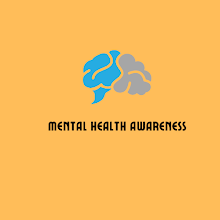Impact of Psychological Factors On the Experience of Pain
.jpg)
Your nervous system utilizes pain as a signal when something is wrong. Similar to a prick, tingle, sting, burn, or soreness, it has a disagreeable feeling. Pain may be mild or severe. It might be continuous or sporadic. Your entire body may have pain or just one area, such as your back, abdomen, chest, or pelvis.
Making a determination may be aided by pain. If you never felt pain, you could seriously hurt yourself without recognizing it or you might not realize you have a medical problem that needs to be treated. There are two types of pain: acute pain and persistent pain. Acute pain frequently arises out of the blue due to a condition, injury, or inflammation. It can frequently be diagnosed and treated. Most of the time it goes away, but on rare occasions, it might become persistent discomfort.
Even though pain is not always curable, there are many methods to treat it. The type and cause of discomfort are the foundation for therapy. Painkillers are one type of medication-assisted therapy. Acupuncture, physical therapy, and rarely surgery are additional non-drug treatments.
Can Pain Be Psychological?
Nevertheless, just as physical pain can make you feel worse mentally, mental discomfort can also occur without a physical reason or can intensify or last longer than it would otherwise. When your pain is a result of underlying psychological, emotional, or behavioral causes, it is referred to as psychogenic pain.
.jpg)
Psychological Aspects of Pain Perception.
The strength of these perceptions can be significantly altered by psychological factors, such as the situational and emotional components present when we experience pain. Pain perceptions can be influenced by attention, comprehension, control, expectancies, and unpleasant significance. As a result, comprehending pain needs not just knowledge of the nociceptive system but also awareness of and control over the numerous environmental and psychological elements that affect how humans perceive pain.
It has been discovered that a number of attitudes and beliefs are connected to the emergence of persistent pain and disability. For instance, some ideas that lead to activity limitations are connected to the emergence of chronic pain and disability. The notions that "hurt is injury" (i.e., if it hurts, something significant must have been broken), "pain is a signal to stop what you are doing" (i.e., if an activity causes pain, you should stop before you injure yourself), and "rest is the best medicine" are some examples of these ideas (ie, pain is a signal you should rest to recuperate your body).
Impact of Psychological Factors On the Experience of Pain
Many emotional and cognitive elements have an impact on how painful something feels. Anxiety, despair, and wrath are examples of emotional states that can amplify the feeling of pain. Perceived pain typically decreases with positive feelings. Depending on their precise focus and substance, the cognitive elements of attention, expectation, and assessment can either increase or lessen pain feelings. Processing nociceptive signals and making pain conscious involves many brain areas.
The regions of the brain that process sensory, emotional, and cognitive information are intricately connected. Afferent nociceptive input to the brain can be facilitated or inhibited through descending routes from cortical areas to the midbrain and spinal levels. The fundamental mechanisms of the diverse influences on emotion and cognition may partially overlap, but they also have certain distinctive features. What becomes obvious is that pain should be viewed as a complicated experience formed by psychological elements that may be specific to each individual rather than just a reflection of nociceptive information.
.jpg)
Treatment Therapies.
Treatments therapies are the following,
- Techniques to help the patient control and/or change how they perceive pain, such as distraction, visualization, and meditation.
- Improving general health and mobility to lessen weariness, as well as creating reasonable personal goals, the accomplishment of which can boost confidence.
Conclusion.
More so than constant experimentation with novel curative or palliative therapies, pain-related acceptance and concentration on functional adaptation and everyday coping can minimize emotional discomfort and stimulate higher physical functioning. The acceptance and commitment paradigm urges people to stop making pointless efforts to prevent or control suffering and instead concentrate on enjoying life to the fullest, engaging in worthwhile activities, and working towards personally meaningful objectives.

%20(1).png)


0 Comments